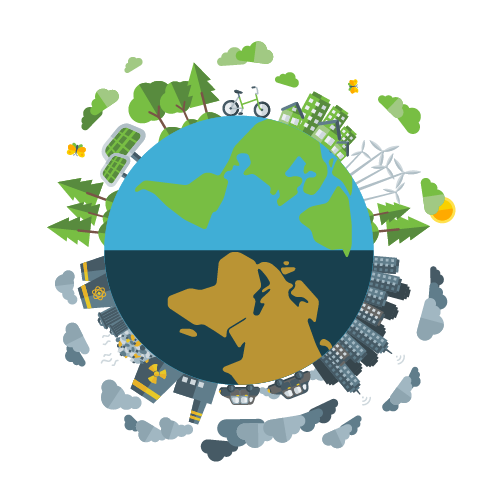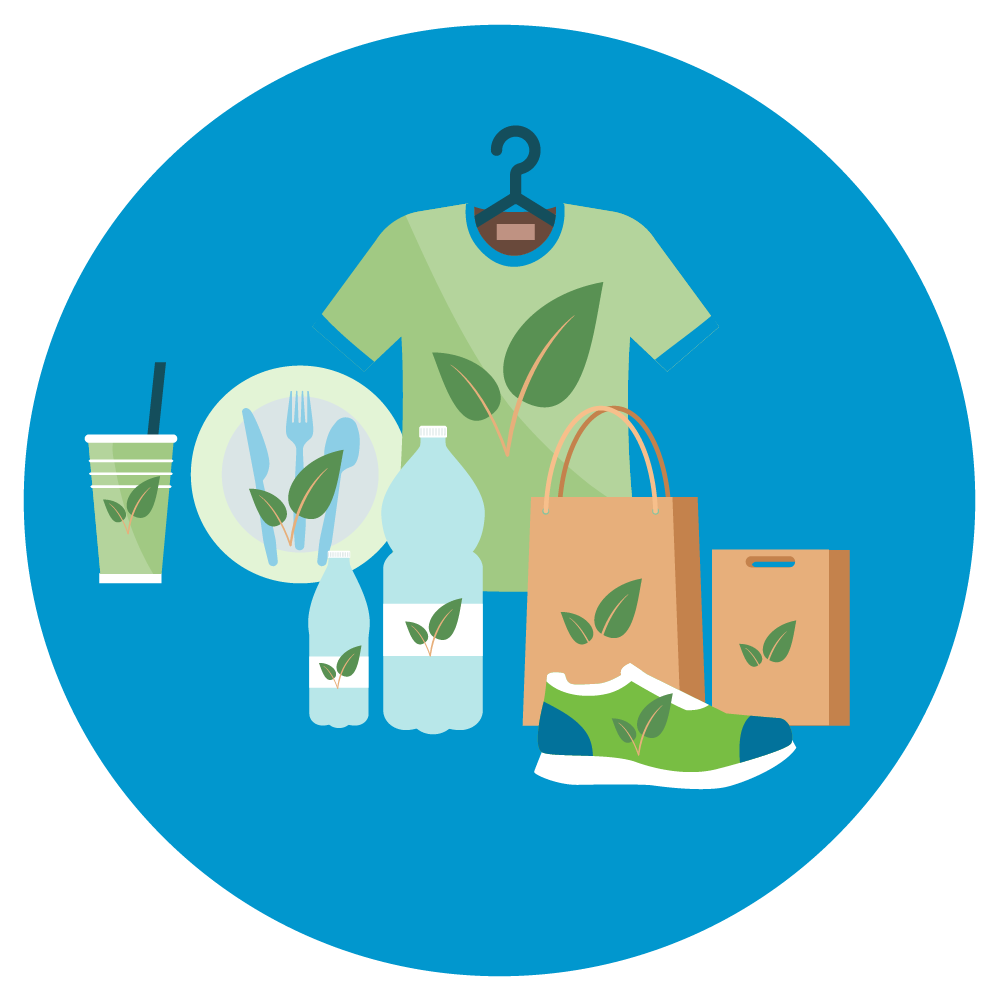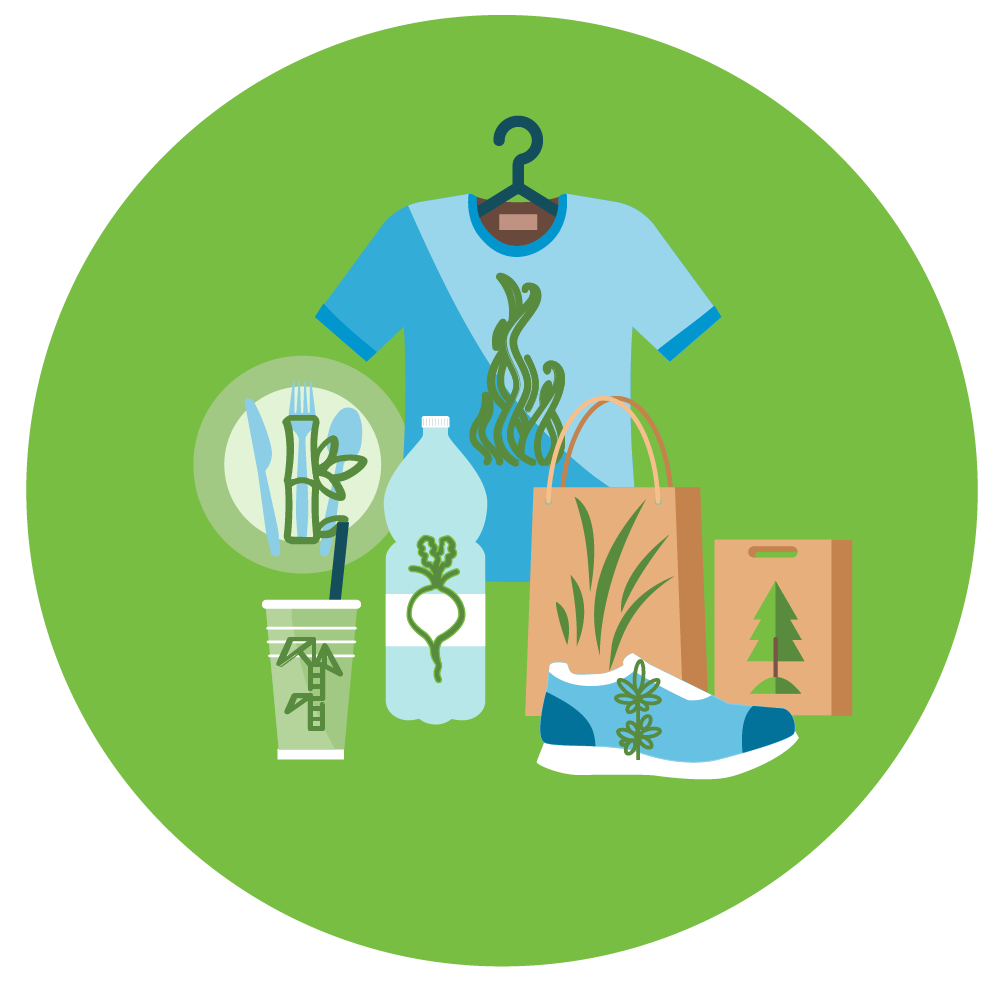There are many terms commonly used when discussing plant based products, but many are used inappropriately or are not well defined. This leads to confusion about the products from stakeholders, including the general public. This confusion often leads to a belief that plant based products are a greenwashing effect, and misuse of these terms by manufacturers of “counterfeit” products creates further mistrust.
PBPC advocates for clear, consistent, standardized terminology, which you can find here in our glossary.
Plant-Based Products Glossary
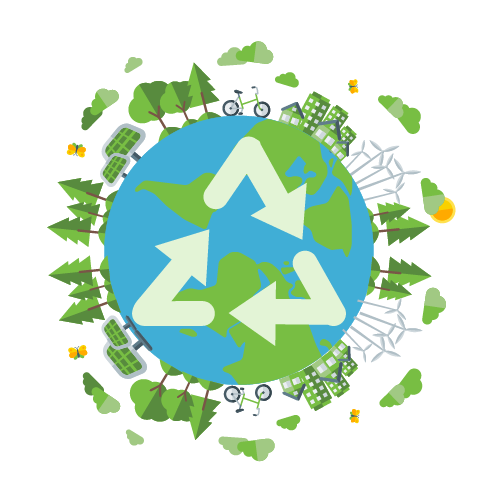
A systemic approach to economic development designed to benefit businesses, society, and the environment. There are three principles that a circular economy is based on:
- design out waste and pollution,
- keep products and materials in use, and
- regenerate natural systems.
- Source: Ellen MacArthur Foundation
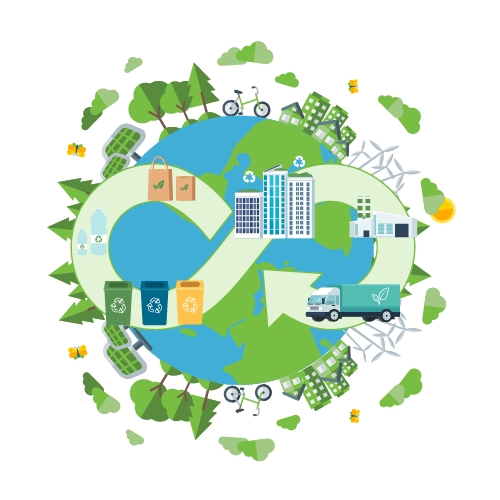
The circular bioeconomy marries two key sustainability concepts. First, it involves using more renewable resources for energy, chemicals, and materials – like products made from plants. Second, it works to keep those sustainable materials and products in use longer, instead of throwing them away. Rather than becoming garbage or pollution, in a circular bioeconomy the products are reused, repurposed or recycled. Take composting as an example: when food waste and compostable dishware are properly diverted to industrial composting facilities, they become healthy, valuable compost. That compost can be utilized to help grow new, sustainable plants.
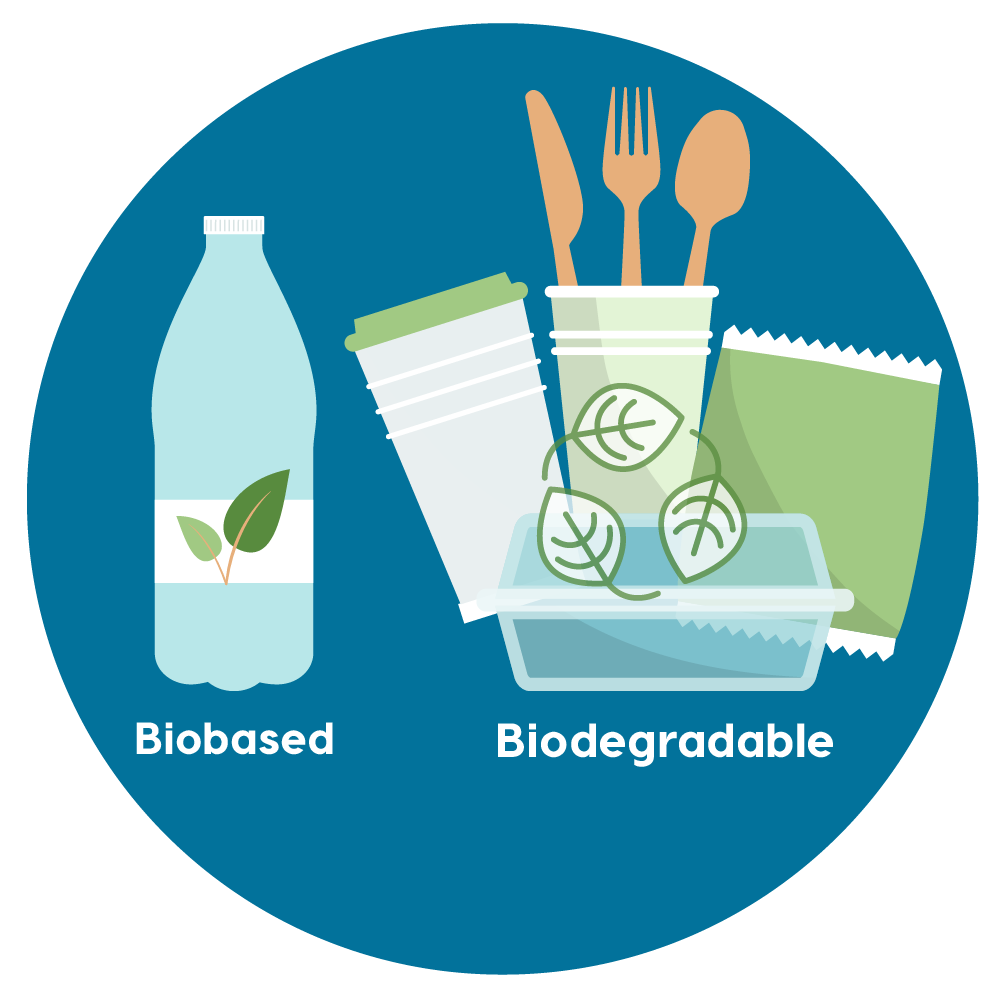
Plastic material is considered a bioplastic if it is either biobased, biodegradable, or features both properties. Bioplastics are a family of materials with different properties and numerous applications.
- Source: European Bioplastics
- PBPC recognizes bioplastics as encompassing both biobased plastics and biodegradable plastics, but advises entities to use specific terms when possible.
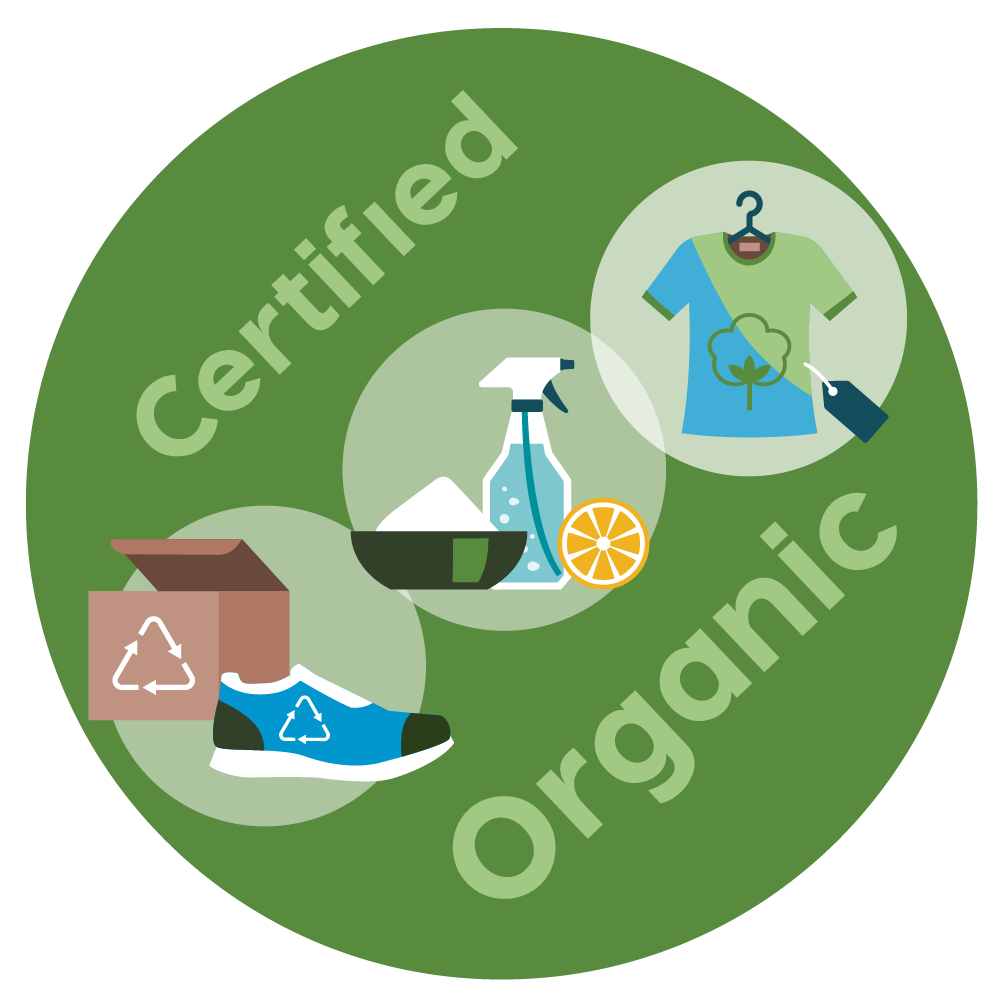
A labeling term that indicates that the food or other agricultural product has been approved through methods. These methods integrate cultural, biological, and mechanical practices that foster cycling of resources, promote ecological balance, and conserve biodiversity. Synthetic fertilizers, sewage sludge, irradiation, and genetic engineering may not be used.
- Source: USDA
- USDA: What is Organic?
- USDA: Organic Labels Explained
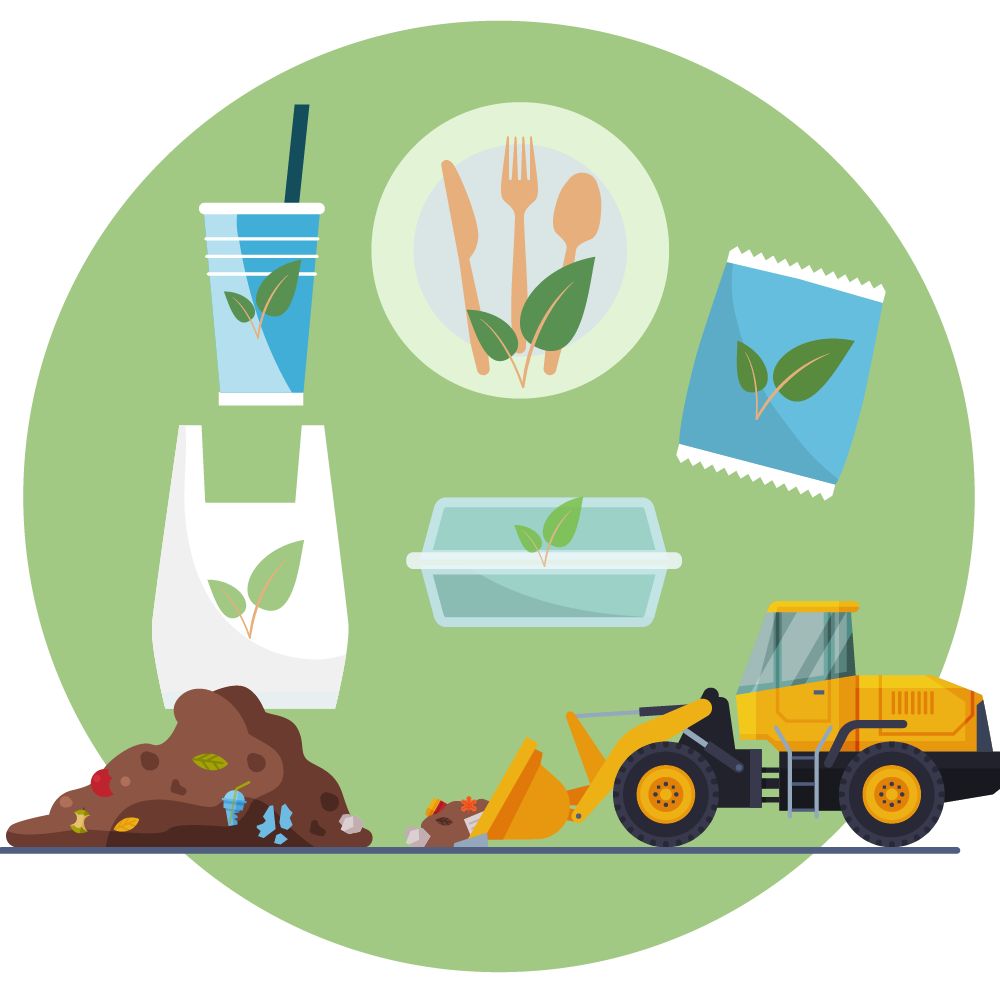
A compostable product is biodegradable in a composting environment, yielding H20, CO2, biomass, and inorganic compounds. The biodegradation during composting should be at a rate similar to other known compostable materials and should not leave visual or toxic residue. To be labeled compostable, a product must meet American Society for Testing and Materials (ASTM) standards D6400 (plastics) and/or D6868 (multi-layer products or packaging). The Biodegradable Products Institute (BPI) compostable certification provides assurance to consumers that the products they buy are third-party verified compostable in commercial composting facilities. A product can display the BPI Compostable Logo if it complies with ASTM D6400 and/or D6868.

A biodegradable product is designed to degrade as a result of the action of naturally occurring microorganisms such as fungi, algae, and bacteria. Restricting the use of this term limits confusion among consumers and prevents the spreading of misleading “green” claims. Biodegradable and compostable are not the same process.
- Source: ASTM

A recyclable claim indicates that the product can be collected, separated, or otherwise recovered from the waste stream through an established recycling program for reuse or use in manufacturing or assembling another item. Recyclable claims also denote the availability of recycling programs and collection sites to consumers, the percentage of a product that is recyclable, and any component that limits the ability of a product to be recycled. On a product labeled as recyclable, phrases specifically referring to these features need to be displayed to avoid deception.
- Source: FTC “Green Guides”

